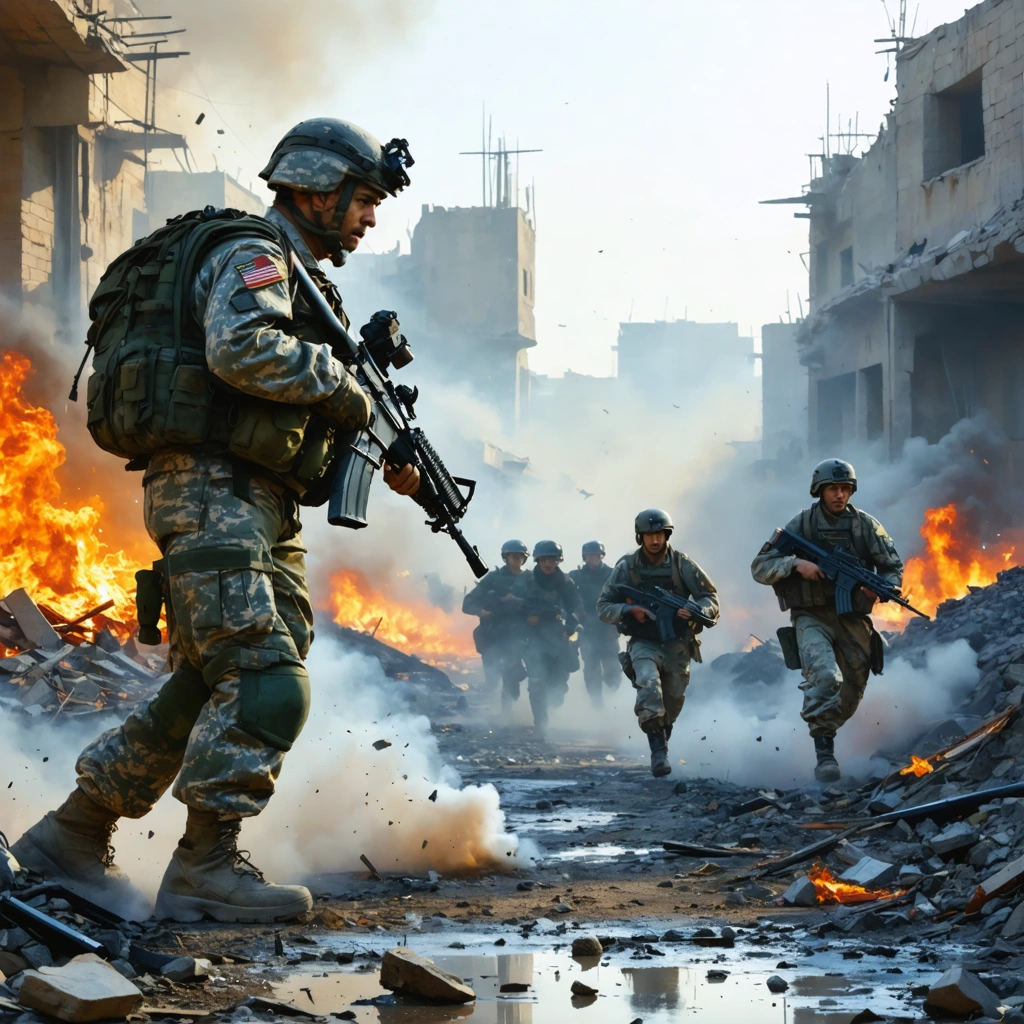
Introduction to the Conflict in Syria
The recent surge of sectarian-driven violence in Syria has underscored persistent challenges in unifying the nation’s armed forces. This article examines the multifaceted nature of Syria’s military fragmentation, its political and operational challenges, and the consequences that widespread internal conflict has on regional stability. Over the past several months, sectarian killings of civilians have been reported, highlighting critical issues in command and control among state and affiliated forces.
Background and Context
The Complex Military Landscape of Syria
Syria’s military configuration is a mosaic of state forces, loyalist militias, and non-state armed groups. Historically, the government has maintained a level of control through reliance on loyalist fighters, but this structure has increasingly been undermined by:
- Fragmented command structures among diverse groups
- Regional power struggles and sectarian rivalries
- External influences from neighboring and global powers
The evolving dynamics underscore that the challenges are not merely military but are deeply interwoven with political, ethnic, and regional tensions.
Political and Operational Pitfalls
One of the dominant issues is the inability of state leadership to effectively manage and integrate these various forces. Issues include:
- Lack of Centralized Command: With both government forces and affiliated militias operating on differing mandates and loyalty structures, establishing uniform operational protocols has proven difficult.
- Political Interference: Internal divisions and external pressures have further compounded the problem, with political factions often using armed groups as proxies.
- Fragmented Ideologies: Sectarian and ideological differences contribute to unpredictability in military behavior, leading to sporadic acts of violence that undermine state authority.
Analysis of the Challenges
Operational Difficulties and Consequences
The operational difficulties facing Syrian armed forces have both local and international implications. Several key factors have been identified as major challenges:
| Factor | Description | Impact |
|---|---|---|
| Command and Control Issues | Multiple independent units acting without a coherent overall strategy. | Reduced operational efficiency and increased risk of friendly fire incidents. |
| Sectarian Divisions | Diverse ethnic and religious backgrounds magnify internal distrust. | Eruptions of violence that destabilize local regions and hinder unified response. |
| External Influences | Foreign policy and interventions by neighboring countries. | Complicates internal decision-making and encourages proxy conflicts. |
Each element interacts with the others, creating a complex operational environment that challenges any attempts to unify the forces under a single banner.
Socio-Political Impact on Unification of Armed Forces
The socio-political landscape in Syria, marked by longstanding grievances and power imbalances, has significant consequences for military cohesion. Some critical observations include:
- Distrust Among Units: Historical conflicts and differing strategic loyalties result in a reluctance to integrate disparate groups.
- Varying Operational Tactics: Conglomerate practices among the forces often lead to disjointed and unpredictable outcomes during military operations.
- Challenges of Accountability: Incidents involving sectarian violence highlight the absence of effective oversight, complicating prevention efforts and post-event investigations.
Moreover, the persistent presence of non-state actors, such as local militias with unclear mandates, contributes to a volatile operational theater that defies standardization.
Future Prospects and Strategies for Unification
Recommended Strategic Approaches
Several strategies have been suggested by experts aiming to mitigate these issues and move toward a cohesive military strategy in Syria:
- Enhance Centralized Command: Strengthening hierarchical structures and communication channels across all forces could form the basis for more effective responses.
- Institutional Reforms: Implementing robust frameworks for accountability and transparent command should reduce instances of sectarian violence and bolster trust among various units.
- Integration of Diverse Units: Creating joint task forces and mixed brigades can help bridge the operational and ideological gaps between various groups.
- International Collaboration: Coordinated efforts with trusted international partners can provide strategic oversight as well as technical and logistical support.
Potential Outcomes and Long-term Implications
Adopting a unified strategy could have far-reaching benefits for Syria. However, the path forward is laden with both opportunities and significant challenges:
- Improved Civilian Security: Unified forces, operating under coherent strategies, could better protect civilian populations and reduce the incidence of sectarian violence.
- Enhanced Military Effectiveness: A streamlined command structure would potentially lead to more robust and coordinated operations against insurgents and faceless adversaries.
- Long-term Political Stability: Successful reform and integration of the armed forces might serve as a catalyst for broader governmental reforms, incrementally leading to a more stable political environment.
Conversely, failure to integrate these diverse elements may lead to prolonged conflict, unchecked violence, and continued factional disputes, thereby deteriorating the already fragile security landscape in the region.
Conclusion
Synthesizing the Complexities
In conclusion, the ongoing violence in Syria dramatically illustrates the difficulty of unifying a disparate collection of armed groups imbued with historical grievances and contemporary political disputes. The challenges detailed throughout this article reveal that any attempts to consolidate military forces under a singular command require multifaceted reforms and a willingness to address underlying socio-political issues.
For the international community and Syrian policymakers alike, the situation serves as a potent reminder of the intricate interplay between ethnicity, ideology, and state control. Achieving a balanced, accountable, and cohesive armed force is not merely a matter of military reorganization—it is a comprehensive endeavor that demands structural, political, and strategic recalibrations.
Ultimately, the road to unified command in Syria is marked by obstacles that span from deep-rooted sectarian divisions to operational inefficiencies. By acknowledging and addressing these challenges with thorough strategic planning and cross-community collaboration, there remains a possibility—albeit challenging—to transform the current state of disarray into a model of coordinated military efficiency. Such a transformation could usher in a period of relative stability and progress for Syria, with broader implications for regional peace and security.




